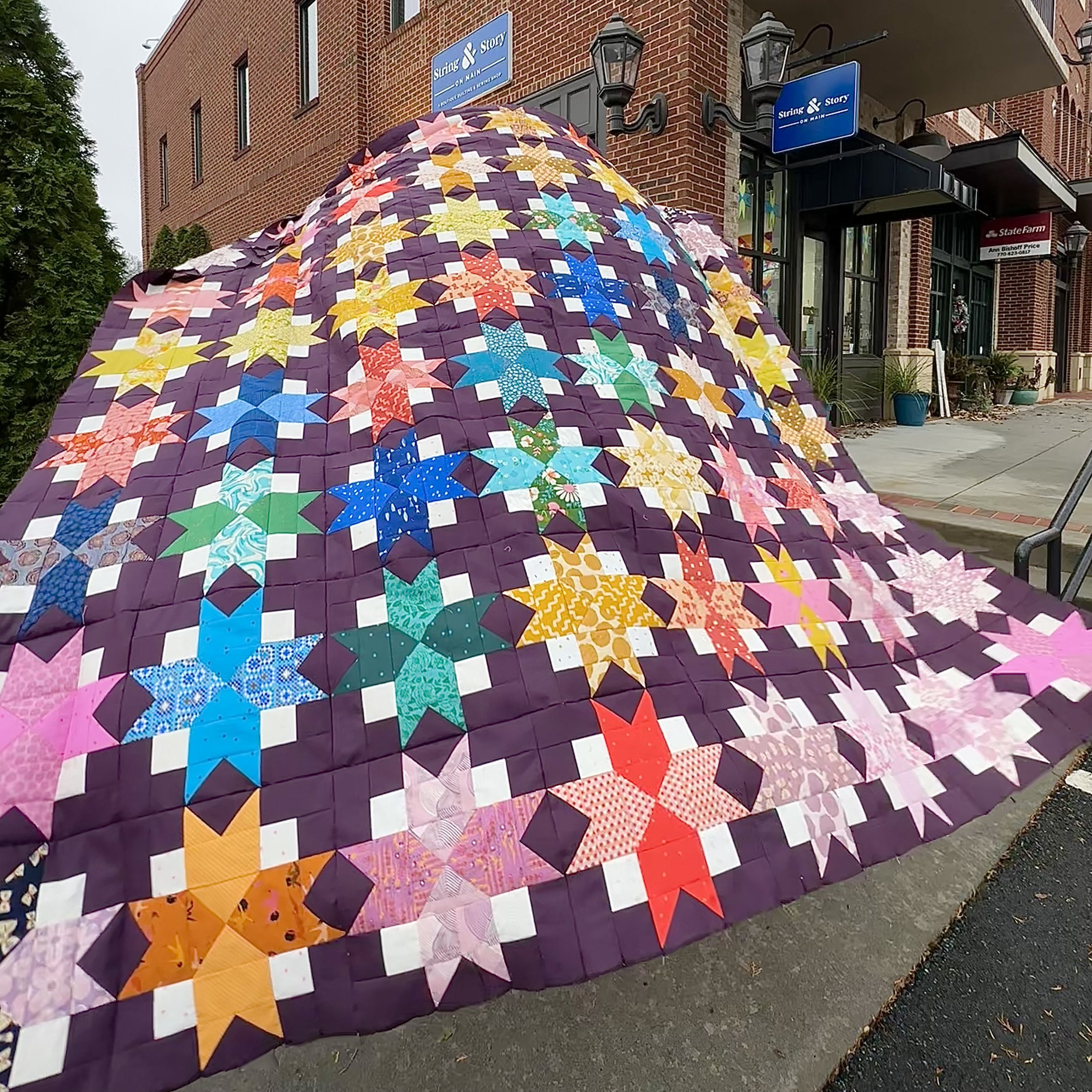Zero Waste Quilting Blog Hop: Ombré Lonestar Quilt
Patty Murphy’s Zero Waste Quilting is based on a straightforward and marvelous concept: the fabric for one project can become a whole series of progressively smaller projects in order to eliminate piles of leftover and abandoned scraps. The result is more finished projects, more joy units, and less fiber waste. It’s fabulous!
This post may contain affilate links
I’ve previously had the pleasure of reviewing Patty’s book here. Here’s the short version:
Zero Waste Quilting: 33 Projects to Use Every Scrap with Style by Patty Murphy is a thoughtful, inspiring guide to making more, using less, and expanding our creativity rather than our fabric stash. As I read Patty’s wisdom about the environmental impact of quilting, her tips for stash organization and use, and finally her creative patterns and projects, I found myself thinking, “Wow, I wish I had this book as a lil’ baby quilter.”
The best reader of this book is a new quilter so they can build a low-waste quilting habit. The second best reader is you and me– more experienced quilters who can make a difference in our environmental impact and spending habits by adjusting our mindset about our projects and our scraps.
Where I Started
At the time of this writing, we’ve recently completed a Polaris quilt-a-long (pictured above) here at String & Story. After several years of dreaming of a large Polaris quilt made from a dozen different Ruby Star Society fabric collections, I’ve made that dream come true… but now I have a lot of scraps!
Normally, these scraps would languish indefinitely in a bin after such a big project. But in keeping with the spirit of Zero Waste Quilting, I wanted to try to use my project-finishing momentum and my scraps to make another quilt. I was excited to take one of Patty’s patterns for a spin.
Now, not only is Zero Waste Quilting brilliantly written to start each section with a rather large quilt and progress through smaller projects until, ideally, you used up all the fabric you started with, but Patty also recognized that folks may want to start in the middle of a series of projects. That means that each set of directions is written to accomodate the scraps of the previous project or to begin with yardage. That makes Zero Waste Quilting even more versatile! It also made it easy for me to select a project well suited to what I had leftover from making Polaris.
Ombré Lonestar
The second section of Zero Waste Quilting begins with a striking double wedding ring quilt: They Got Married. Because of the funky shapes of the melons for that project, there are some pretty big pieces left over. The book suggests a fresh spin on a classic design as the next project: Ombré Lonestar. I was drawn to this project because 1) I’ve wanted to make a lonestar for years 2) I had similar big chunks of fabric leftover from my Polaris quilt and 3) I was pretty sure I could make the whole top from scraps and stash– fun!
Now, an aside: I LOVE the look of scrappy quilts. However, I’m not consistent about using my scraps. Instead, I tend to do what I did for the Polaris quilt: use one frillion fat quarters to give a scrappy effect but be left with a lot of extra fabric that languishes when the project is complete. This time, though, I was going to make a scrappy quilt from my actual scraps. Huzzah!
Ombré Lonestar is a lovely throw sized quilt. Construction starts with simple strip piecing, but there are a few challenges, such as matching up the diamonds to assemble each section of the star and using y-seams to add the background. I found both steps to be useful opportunities to practice skills I don’t use very often. Because I was working from scraps, I also felt less pressure to get everything perfect and more freedom to enjoy the process. This was, after all, a bonus quilt!
In all, I made this quilt (the center star, omitting the borders) in about six hours. It was a lovely sewing day, and I’m thrilled with the result!
Final Thoughts
Zero Waste Quilting is an important and timely addition to every quilting library. Inside, Patty Murphy draws readers’ attention to the environmental impact of textile manufacturing and waste then inspires us to tackle these challenges, not by withdrawing from the craft we love, but instead by making more– using our fabric more effectively and making a variety of useful items for our homes and to share as gifts. Readers, myself included, will finish perusing these pages eager to head to the sewing room to reorganize their stash, work on current projects (or start a few new ones), and plan creative ways to use their scraps.
Resources
BLOG: How to Shop Your Stash
WORKBOOK: Quilt Your First Project with Confidence (free download)







